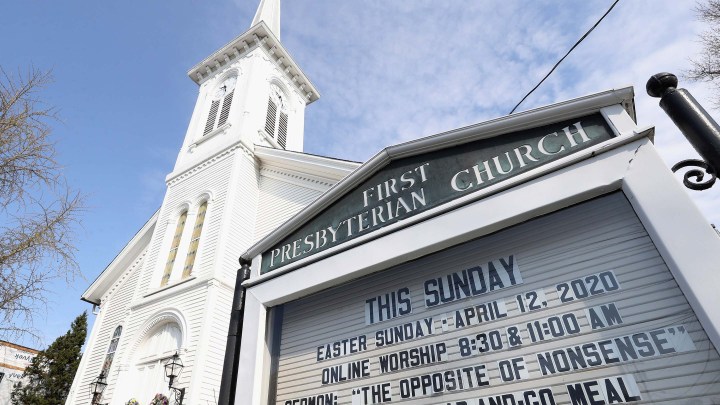
Religious institution membership falls below majority for first time
Religious institution membership falls below majority for first time

When the pandemic shut down Spirit of Life Presbyterian Church in Apple Valley, Minnesota, last March, Rev. Rob Smith was faced with a bunch of logistical problems.
“Our goal in the beginning was love your neighbor, stay home, wear your mask,” Smith said. “But yet how do we be a church in this quick change that happened overnight?”
The answer was over Zoom, and he’s still holding most services this way. But that made things tough financially. The church wasn’t collecting money from weddings or community groups that usually rent its space, and there was no way to pass around the offering plate, though Smith did attempt drive-in worship.
“I think it presents better from our homes, from our screens, than it has from the back of my pickup truck in our parking lot,” he said.
As many Americans celebrate Easter and Passover this week, religious institutions are still dealing with the pandemic’s interruptions to services. On top of years of steadily declining membership, it has affected budgets. According to new data from Gallup, people who belong to a church, synagogue or mosque are in the minority, making up less than 50% of the population — for the first time ever.
According to David King, director of the Lake Institute on Faith & Giving at Indiana University’s Lilly Family School of Philanthropy, smaller institutions have struggled most during the pandemic.
“Larger congregations were more likely to receive PPP loans. And they were also better resourced to shift to livestream services, as well as digital giving formats,” King said.
Lower attendance during COVID, however, is a temporary problem. Membership overall has been declining for years, including among young people. Only about 35% of millennials belong to a church, synagogue or mosque, compared to just over 50% a decade ago, according to Gallup.
Amy Asin, vice president of strengthening congregations at the Union for Reform Judaism, said one way congregations are reaching out to these generations is by participating in civic engagement to do with racial injustice.
“If we can stop thinking about ‘How do I get people to show up for services’ and start thinking about how can we help bring the Torah to peoples’ lives in ways that can help them answer those questions, I think we can be very relevant,” Asin said.
For Smith, getting online boosted relevancy. Current members encouraged new ones to join from Iowa, Wisconsin, even New York. Donations went up, and he’s going to keep offering Zoom service to those members even when things go back to normal.
There’s a lot happening in the world. Through it all, Marketplace is here for you.
You rely on Marketplace to break down the world’s events and tell you how it affects you in a fact-based, approachable way. We rely on your financial support to keep making that possible.
Your donation today powers the independent journalism that you rely on. For just $5/month, you can help sustain Marketplace so we can keep reporting on the things that matter to you.











